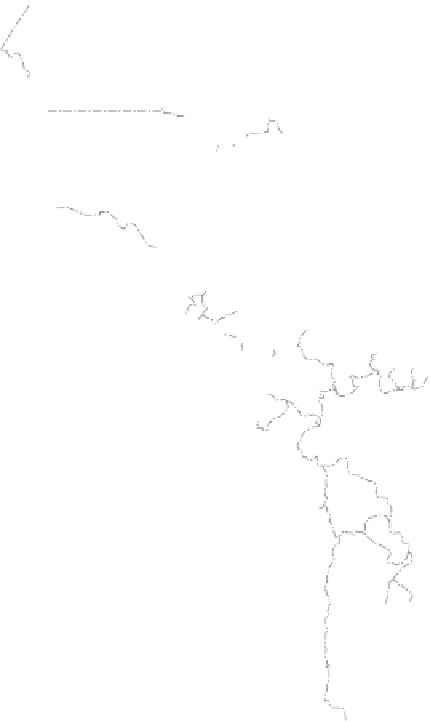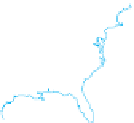Geography Reference
In-Depth Information
GREENLAND
U.S.
(Alaska)
60°
CANADA
40°
40°
UNITED STATES
ATLANTIC
BERMUDA
OCEAN
BAHAMAS
CUBA
JAMAICA
BELIZE
MEXICO
Tropic of Cancer
DOMINICAN
REPUBLIC
20°
20°
20°
U.S.
(Hawaii)
HAITI
PUERTO
RICO
HONDURAS
GUATEMALA
EL SALVADOR
BARBADOS
TRINIDAD & TOBAGO
SURINAME
FRENCH GUIANA
NICARAGUA
PACIFIC
COSTA RICA
VENEZUELA
PANAMA
COLOMBIA
GUYANA
0°
Equator
ECUADOR
OCEAN
PERU
BRAZIL
URBAN POPULATION
AS A PERCENTAGE OF
THE TOTAL POPULATION
90% and above
BOLIVIA
20°
20°
20°
PARAGUAY
Tropic of Capricorn
70-89%
ARGENTINA
CHILE
URUGUAY
55-69%
40°
40°
40°
40°
40-54%
25-39%
24% and below
160°
140°
120°
80°
60°
40°
60°
60°
60°
60°
Data not available
SOUTHERN
OCEAN
0
1000
2000
3000 Kilometers
0
1000
2000 Miles
Figure 9.3
Urban Population as a Percentage of the Total Population, by State.
The dwellings in ancient agricultural villages were about
the same size and contained about the same number of
possessions, refl ecting the egalitarian nature (sharing of
goods in common among the people) of the societies liv-
ing in these early villages. The populations were perma-
nent, refl ected in the dwelling units where people moved
rocks in, built permanent structures, and laid out fl oors
made of plaster. Egalitarian societies persisted long after
agriculture began.
Scholars are fairly certain that these descriptors accu-
rately depict the agricultural villages in the fi rst agricul-
tural hearth, the area of Southwest Asia called the Fertile
Crescent. Additional archaeological evidence portrays
agricultural villages in the later hearths of agricultural
innovation, the Indus River Valley and Mesoamerica, as
also fi tting these descriptors. When people establish cit-
ies, however, these descriptors become inaccurate. In cit-
ies, people generate personal material wealth, trade over
long distances, live in stratifi ed classes that are usually
refl ected in the housing, and engage in a diversity of eco-
nomic activities—not just agriculture.
Two components enabled cities to stabilize and
grow:
agricultural surplus
and
social stratifi cation.
Archaeologists, anthropologists, and geographers have
studied the remains and records of the fi rst cities, creating
numerous theories as to how cities came about. Most agree
that some series of events led to the formation of an agricul-
tural surplus and a leadership class; which came fi rst varies by




























































































































































































































































































































































































